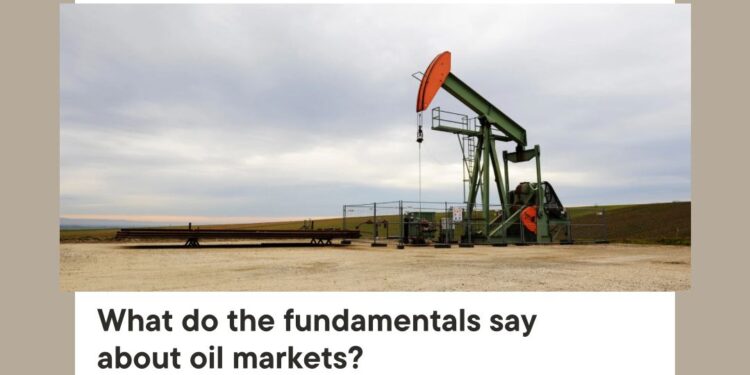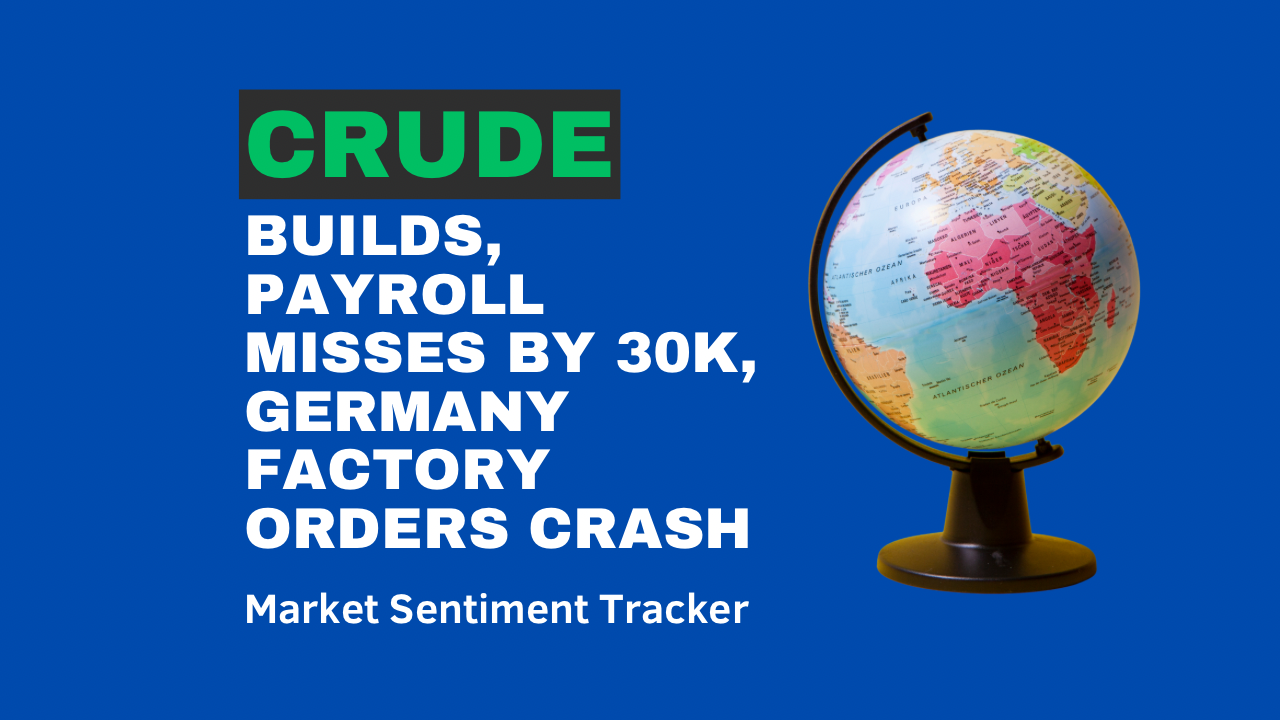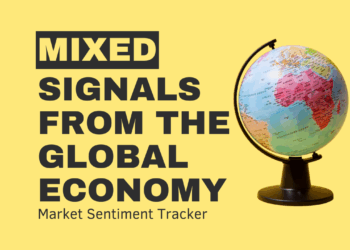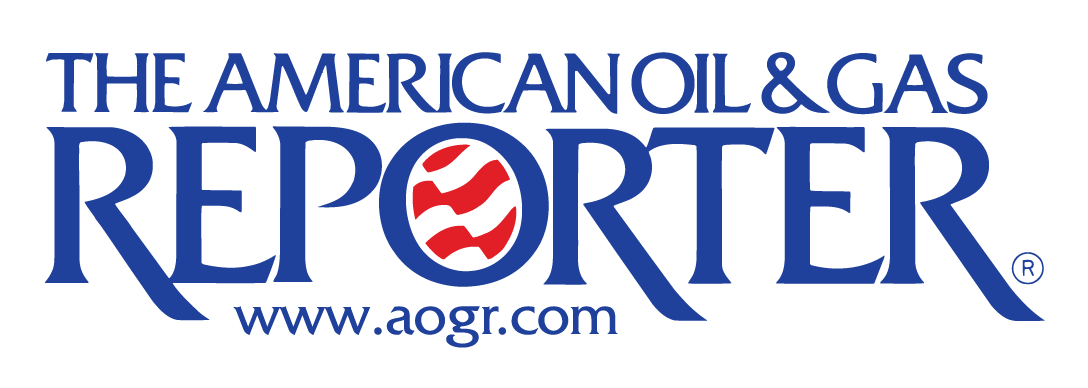The oil market’s story goes far beyond daily price fluctuations. Even as headline prices bob within a range – Brent crude has mostly stayed between $70 and $80 per barrel through the past year – underlying fundamentals and geopolitical shifts are constantly at play. To truly gauge where oil is heading, one must look under the hood at key factors: supply disruptions or growth in major producers, regional demand trends, physical inventories at trading hubs, freight and logistics costs, policy interventions, refining economics, and even speculative investor positioning. All these elements interact to shape the market’s future direction. In this article, we delve into the most important current developments influencing oil markets as of early March 2025, painting a picture that is much richer than a simple up-or-down price narrative.
Brazil’s Oil Production Challenges
Brazil has emerged in recent years as a crucial engine of non-OPEC supply growth, but it now faces headwinds from unexpected drilling stoppages. In the past few months, Brazilian regulators have suspended multiple offshore drilling operations over safety and environmental concerns. For example, a Feb. 14 incident on a drillship for Equinor – a pump failure that blew off equipment – prompted a halt, and at least three other drillships have been idled for what operators describe as minor issues. Even state-run Petrobras saw two rigs temporarily suspended by late February, leading the company to form a task force to address regulatory concerns. These interruptions threaten to slow both the exploration of new fields and development drilling in existing offshore projects.

The timing is critical. Brazil’s output actually declined in 2024, defying forecasts of growth, after years of steady gains from its pre-salt fields. If production fails to rebound in 2025 due to the regulatory crackdown, it could remove a key source of expected non-OPEC supply. Brazil was pumping roughly 3.4 million barrels per day last year (about 3% of global supply), rivaling major OPEC members. A stagnant Brazil could encourage OPEC+ to open the taps a bit more without fear of crashing prices. On the flip side, there are positive developments that might offset these risks. Petrobras has been bringing new projects online – notably the FPSO Almirante Tamandaré in the giant Búzios field started production on Feb. 15, 2025, adding up to 225,000 bpd of capacity. Brazil is pressing ahead on its offshore expansion, and policy-wise the government continues to support hydrocarbon development. The hope is that new high-capacity platforms and fields (Búzios is expected to reach 1 million bpd by H2 2025 will counteract any downtime from regulatory hurdles. Still, the recent regulatory “crackdown” has injected uncertainty. Brazil’s independent regulators are known for strict standards, and industry executives are now on alert that a tougher operating environment could be the “new normal” unless a middle ground is found. How Brazil navigates safety vs. output growth will be pivotal, given its outsized role in global supply expectations.
Declining Oil Imports in Asia
In Asia, the demand side of the equation is flashing some warning signs. According to an analysis, Asia’s crude oil imports are off to a weak start in 2025 – averaging about 26.17 million bpd in January-February, down 780,000 bpd (around 3%) from the same period a year prior. This decline calls into question the bullish demand growth forecasts many had for this year. The downturn is led by China, the world’s top importer, which has curbed its crude purchases significantly. Chinese arrivals averaged 10.42 million bpd in the first two months, a steep drop of 840,000 bpd from early 2024. In percentage terms, China’s imports are down about 7-8% year-on-year – an acceleration of the decline seen in 2024, when imports fell ~2% for the full year.

What’s behind China’s softer appetite? A sluggish economy recovery with industrial activity and property construction in China lackluste. Structural changes are also at play: the rapid rise of electric vehicles is beginning to dent gasoline consumption growth, and more trucks are running on LNG, trimming diesel use. Additionally, China built up inventories when prices were lower; it may now be drawing on those stockpiles instead of importing at current prices.
In contrast, India – Asia’s second-largest importer – started 2025 strong. Indian crude imports averaged 4.98 million bpd in Jan-Feb, up 280,000 bpd from a year earlier. January was especially high at over 5 million bpd, though imports eased to 4.87 million in February. This dip in Feb likely reflects difficulties securing as much discounted Russian oil as last year. Here’s the crux: a slew of new Western sanctions on Russia’s oil exports took effect in January, targeting the “shadow fleet” of tankers that carry Russian crude to Asia. These measures have started to bite. Asia’s seaborne imports of Russian crude fell to an expected 2.40 million bpd in Feb, the lowest since May 2022 and down sharply from nearly 4.0 million at the peak in 2023. China, notably, slashed its seaborne Russian intake to around 500,000 bpd in February (from about 1.0 million bpd in recent months). Chinese refiners moved early to cut Russian purchases – likely to stay on the right side of sanctions – and replaced those barrels with crude from elsewhere, particularly Angola and Brazil. Asia’s imports of Angolan crude are set to jump to ~1.13 million bpd in February (from 0.67 in January), and Brazilian crude to ~1.05 million bpd (up from 0.93). India, meanwhile, scooped up Russian cargoes aggressively before the new rules took hold, pushing its Feb Russian purchases to a three-month high ~1.7 million bpd – but those volumes are expected to fall going into March as the sanctions constrain logistics.
These shifting sourcing strategies speak volumes. China is diversifying supply (leaning more on Africa and Latin America), and even announced a 10% tariff on U.S. crude imports in retaliation to U.S. trade measures. That tariff, effective soon, essentially prices U.S. oil out of the Chinese market for the coming months. India may backfill some of that gap by buying more U.S. barrels, especially if it needs alternatives to Russian crude. Importantly, the weakness in Asian imports could impact global balances. If Asia’s demand is truly softer than anticipated, the 2025 demand forecasts from OPEC and others might be too optimistic. A shortfall in expected Asian consumption could lead to larger global stock builds or force producers to adjust output to avoid a glut. The next few months will reveal if Asia’s slow start is a temporary blip (due to inventory management and one-off events) or the start of a more subdued demand trend. For now, market watchers are cautious, seeing Asia as a potential bearish factor if imports don’t pick up to predicted levels.
Physical Oil Markets Update
While futures prices grab headlines, the physical oil market – from regional grade differentials to inventories at key hubs – provides critical real-time insight. In early March 2025, physical differentials for many crude grades have been under pressure, reflecting an environment of adequate (even ample) near-term supply and some demand softness. For instance, North Sea and U.S. crudes have been trading at discounts relative to global benchmarks. WTI crude in Cushing has been lagging Brent, in part due to export bottlenecks and recent investor pessimism toward U.S. barrels. In Asia, the Dubai vs. Brent spread has narrowed as Middle Eastern heavy sour crudes become relatively pricier – a consequence of Asian buyers bidding up Mideast shipments to replace reduced Russian flows. Concurrently, discounted Russian Urals and ESPO crudes, while still available to willing buyers, have seen their price gap to Brent tighten compared to 2022, though they remain below global benchmarks due to sanctions-related constraints.
Global trade flows are also in flux. With China imposing tariffs on U.S. oil and Russian exports curtailed, we’re seeing longer voyages: more Atlantic Basin crudes heading east (e.g. West African shipments to China are up, as noted), and conversely some Russian oil that would go to Asia possibly seeking outlet in the Mediterranean via ship-to-ship transfers or other creative logistics. Tanker tracking data indicates robust flows of U.S. crude to Europe as well – European refiners have been importing U.S. light sweet oil at high rates, given its availability and the disruption of some North Sea output by maintenance.
Inventory levels at major trading hubs tell another part of the story. In the United States, Cushing, Oklahoma – the delivery point for WTI – has recently seen a rebound in stocks. Latest data show Cushing inventories rose to about 24.6 million barrels in late February , the highest since last November. This is a notable recovery considering Cushing was drawn down to operational minimums late last year. One driver has been a surge of Canadian crude into Cushing ahead of anticipated U.S. import tariffs on Canadian oil; Canadian imports jumped to 3.82 million bpd recently as producers rushed shipments before the tariff kicks in . Those barrels mostly land in the Midcontinent, boosting Cushing stocks. U.S. nationwide crude stocks, around 430 million barrels, have been fluctuating with refinery runs – a recent weekly draw of 2.3 million was reported as refineries exit maintenance and ramp up.
In Europe’s ARA (Amsterdam-Rotterdam-Antwerp) hub, inventories have been on a bit of a roller coaster. During January and early February, ARA saw consecutive builds, with diesel and gasoline stocks hitting multi-year highs amid mild winter demand and strong import flows. By mid-February, gasoil (diesel) inventories in ARA reached a ~4-year high of about 2.58 million tonnes, according to Insights Global data, thanks to steady imports and tepid regional consumption. However, this trend reversed later in February as exports picked up. As arbitrage “windows” opened, European suppliers started sending surplus fuel to other regions (diesel to Latin America/Africa, gasoline to the U.S.), causing ARA stockpiles to fall to a 10-week low by the end of the month. Fuel oil inventories in ARA, for example, dropped to their lowest since late 2024 as cargoes were directed eastwards. In short, Europe built a cushion of product stocks and is now drawing it down via outward flows, balancing the market.
Asian hub stocks have likewise seen notable moves. In Singapore, the key storage and trading center for refined fuels, fuel oil stocks have tightened significantly. By late February, Singapore’s residual fuel oil inventories slipped to a three-month low of around 19 million barrels, even as the city-state imported large volumes. This suggests very strong bunker demand or transshipment to other markets – in fact, traders report brisk buying of low-sulfur fuel oil (LSFO) as shippers rushed to fill orders when prices dipped briefly. On the other hand, Singapore’s middle distillate stocks (diesel/jet) had been building through January, reflecting slower regional demand and increased Chinese exports, though those builds have moderated recently. Over in Fujairah (UAE), another crucial hub, total oil product inventories hit an 8-month high in February before edging down. As of mid-Feb, Fujairah’s stockpiles were just under 20 million barrels. Notably, light distillates (gasoline/naphtha) fell by 10% in one week amid export draws, while middle distillates in Fujairah jumped 50% to ~2.33 million barrels – albeit from a low base – likely due to some diesel inflows. The heavy residue stocks in Fujairah also remained high, a sign of ample supply for power generation and bunker fuel. These stock levels across hubs indicate a market that is reasonably well-supplied in products, if not somewhat oversupplied in certain categories like diesel earlier in the winter. However, ongoing draws suggest the excess might be clearing.

On the freight and logistics front, tanker rates have been volatile. In February, crude shipping costs on key routes spiked, then softened. For example, VLCC (Very Large Crude Carrier) rates from the Middle East to China surged to around 70 – up 30% in a week and roughly 63% higher than a month earlier. This spike reflected a flurry of bookings (possibly as Asian buyers secured cargoes ahead of sanctions deadlines and tariff changes). Suezmax rates on West Africa-to-Europe routes also firmed, while Aframax rates in the Med saw only modest changes. Higher freight costs can effectively raise the delivered price of crude, influencing who buys what from where. Lately, as freight spiked, we saw China favor nearer suppliers (like Middle East or Africa) over very distant ones. However, news that the U.S. paused planned oil import tariffs on Canada/Mexico gave a breather to short-haul Aframax trades in the Atlantic. Looking ahead, freight is expected to remain a swinging factor – with sanctions, tariffs, and rerouted flows keeping tanker demand unpredictable. If a glut of unsold barrels develops, tanker rates could soften again as charterers hold the upper hand; conversely, any surge in long-haul arbitrage (for instance, U.S. crude finding new Asian buyers) would tighten vessel availability and boost rates. In sum, physical market indicators as of early March show a market in balance but on the cusp – inventories are neither critically low nor massively bloated, and any shifts in demand or supply (such as Asia’s import weakness or Brazil’s output issues) will tip that balance and influence prompt crude differentials and freight in the coming weeks.

Russia Sanctions & Potential Ceasefire Impacts
Geopolitics remain a wildcard for oil, with the Russia-Ukraine war and associated sanctions at center stage. A new wrinkle in 2025 is the prospect of a Trump-brokered ceasefire in Ukraine, which could potentially reshape Russia’s oil exports landscape. Diplomatic talks in February signaled that U.S. President Donald Trump is pushing to “quickly end the war,” and Russia’s President Vladimir Putin has shown willingness to negotiate given certain conditions. If a peace deal or even a durable ceasefire emerges, it may open the door for the easing of Western oil sanctions on Russia. Indeed, Russia and the U.S. have discussed global energy as part of their talks, and Russia’s sovereign wealth fund even speculated that some U.S. companies could return to the Russian market by Q2 2025 if sanctions are lifted.
For oil, the implications are significant. Currently, Russia’s exports are constrained by a web of sanctions: G7 price caps, EU import bans, and U.S. restrictions. These have forced Russian crude to trade at discounts and rely on a shadow fleet to reach buyers like China and India. But a ceasefire could prompt a relaxation of those measures, allowing more Russian crude to flow openly into world markets. Investors are already eyeing this possibility – as John Kemp notes, talk of ending the conflict is seen as something that “could add to crude supplies” down the line. If sanctions were lifted or the price cap removed, Russian producers would likely try to ramp up exports to reclaim market share. Russia has significant spare capacity (some wells were throttled back by necessity), and it could conceivably boost output by several hundred thousand barrels per day over time if unrestricted access to buyers returns.
What would that mean for prices? In the near term, the mere anticipation of more Russian oil has kept a lid on bullish sentiment. Many traders remain unconvinced that current sanctions will hold or tighten further – especially with the U.S. administration shifting stance. A flood of Russian barrels would be bearish for oil prices, potentially reintroducing an oversupply unless offset by cuts elsewhere (e.g., OPEC+). In fact, OPEC+ might preemptively adjust if they see Russian supply coming back; the alliance could decide to slow its output increases to accommodate Russia’s return without crashing prices, effectively folding Russia’s resurgence into their supply management.
Which countries would soak up additional Russian crude if it becomes available? China and India are obvious candidates – they’ve been the primary buyers of sanctioned Russian oil (at discounts). With sanctions lifted, these importers could openly buy even more, possibly at prices closer to market. India, which this year faced some logistical struggles obtaining Russian volumes due to sanctions, would eagerly ramp up purchases if shipping and insurance frictions ease. China too might increase its intake of Urals or ESPO if the deals are attractive, especially since it imposed tariffs on U.S. oil and may want to replace those barrels. Beyond Asia, some European refiners could re-enter the fray. Countries in Eastern Europe that historically ran on Russian Urals (Hungary, for instance, which already has some exemptions via pipeline imports) might scale up buying seaborne Russian crude if allowed, given their refinery configurations. Even trading houses and Western oil majors could jump back in to arbitrage Russian oil if sanctions are removed – remember that prior to the war, Russia was one of the world’s top suppliers to Europe. However, politics will play a role; an EU buyer would only re-engage if their governments allow it, which might require not just a ceasefire but a broader lifting of EU sanctions.
It’s also worth noting a ceasefire could impact Russian refined product exports. If European markets reopen to Russian diesel, for example, that could reshuffle trade flows again (Russia is a major diesel exporter). But one step at a time – the immediate focus is crude. As of now, sanctions enforcement has shown some effect, but a peace deal could reverse this trend swiftly. In summary, the prospect of peace in Ukraine is a double-edged sword for oil: it reduces geopolitical risk premia (usually bearish for price) and could unleash more supply from Russia, yet it also might stabilize a key region. All eyes will be on any Trump-Putin agreement and the corresponding signals about sanctions relief. In the event of a truce, we may witness a significant reshuffling of global oil flows later in 2025, with Russia attempting to regain lost markets and importers enjoying greater optionality in sourcing. That outcome would put OPEC+ to the test in managing supply and could pressure prices downward unless global demand surprises strongly to the upside.
OPEC+ Strategy and Supply Balances
Against this backdrop, the OPEC+ alliance – which includes Saudi Arabia, Russia, and other producers – continues to carefully calibrate its output strategy. The latest signals from OPEC+ show a commitment to supporting the market, but with a phased approach to unwinding their voluntary production cuts. Recall that throughout 2023 and early 2024, OPEC+ implemented substantial extra cuts on top of earlier curbs: by late 2024, they were collectively holding back about 5.86 million bpd from the market to prop up prices. This figure comprises a base cut of 2 million bpd (agreed in late 2022), plus a first tranche of 1.65 million in voluntary cuts by Saudi and others (from mid-2023), and a second tranche of 2.2 million in voluntary cuts (announced later in 2023) . These measures succeeded in preventing a severe glut – note that prices, while not high, stayed relatively range-bound – but they also mean a lot of idle capacity waiting on the sidelines.

In early February 2025, OPEC+ confirmed that it will begin returning some of this sidelined production to the market from April 2025 onward. Specifically, the alliance plans to gradually unwind the 2.2 million bpd of second-stage voluntary cuts starting in April. According to the agreed schedule, they’ll add back only about 138,000 bpd each month from April 2025 through September 2026. That is a very measured pace – slower than a prior plan which envisioned ~180,000 bpd monthly increments over one year. By stretching the restoration over 18 months, OPEC+ is clearly aiming to avoid flooding the market. It’s a cautious “taper” approach: if demand growth falters or other supply (like Russia) comes back, they can pause or adjust these increments at subsequent meetings. Alongside this, OPEC+ granted a concession to the UAE – allowing it to raise its baseline output by 300,000 bpd starting April (spread over until Sept 2026). The UAE had lobbied for a higher quota given its investment in new capacity, and this phased increase addresses that without destabilizing the near-term balance.
The OPEC+ strategy right now is essentially to support prices without spurring a surge of U.S. shale or antagonizing big consumers. By keeping some cuts in place through 2025, they reduce the risk of oversupply, especially if global demand growth ends up on the low side (as the early Asia data hint). Notably, the bulk of OPEC’s earlier cuts (the base 2 mbpd and the first voluntary 1.65 mbpd) have now been extended all the way to end of 2026 – a signal of longer-term resolve to manage supply. The gradual return of 2.2 mbpd from April 2025 means that through the summer at least, OPEC+ output will only creep up incrementally. This could lead to tightening inventories if demand surprises to the upside. In fact, some analysts considered the decision bullish for 2025 balances, since it removes the specter of a sudden supply dump. Energy Aspects noted the move “removed the bulk of oversupply” expected next year. However, market sentiment has been mixed – with many believing the new U.S. administration wants lower oil prices, traders have remained somewhat bearish despite OPEC’s restraint.
How is this playing out in supply-demand so far? With OPEC+ holding back barrels, global oil inventories have not swelled dramatically; in fact, OECD commercial stocks fell to their lowest in over two years by late 2024. The alliance will be watching those inventory levels closely. If we start to see big draws (meaning the market is undersupplied), OPEC+ might even accelerate the unwinding to prevent price spikes. Conversely, if demand disappoints (Asia, for example) or others add supply (Iran has inched up exports despite sanctions, and as discussed Russia could come back), they could delay the planned increases. Flexibility is their mantra. It’s worth noting Saudi Arabia and a few core Gulf members are the ones bearing most of the voluntary cuts – they will gauge when to bring production back both from an economic and political lens. For now, the supply picture is one of a market in tentative equilibrium: OPEC+ cuts have offset rising output in places like the U.S. and allowed global stocks to normalize. As their output slowly rises from April, the risk is whether demand keeps pace. If it does, we might avoid large stock builds and prices should stay relatively stable. If not, we could see inventories climbing in the second half, which might prompt OPEC+ to reconsider the pace of its supply restoration. In essence, OPEC+ is trying to engineer a soft landing for the market – adding just enough oil to meet demand growth but not so much as to recreate a glut. Their strategy in 2025 will greatly influence whether prices remain in the comfortable $70-80 range or break out in either direction.

Refining Trends & Crack Spreads
The downstream side of the market – refining – has its own cycle that’s affecting crude demand and product prices. Over the past few months, refining margins (crack spreads) have come down from the highs of the last two years and are now relatively subdued across major regions. In the United States, refining margins boomed in 2022 and early 2023 due to post-pandemic demand and the loss of Russian products in Europe. But by late 2024, the tide turned. In December, gasoline cracks sank below $11 per barrel (using WTI crude as feedstock), a one-year low, while diesel (ULSD) cracks dipped under $22 – much lower than the $40+ levels seen at times in 2022. These are still positive margins, but “normal” rather than windfall. U.S. refiners saw their profits plunge as a result – PBF Energy even reported a net loss in Q4 2024, and other independent refiners like Valero and Phillips 66 saw refining earnings drop 70-90% year-on-year. Refiners had ramped runs in late 2023 (utilization hit 90%+ in Q4 just as new refining capacity around the world came online and seasonal demand softened, which pressured margins. Essentially, the crack spread normalization marks the end of the ultra-tight refining market; more supply of refined products and slightly weaker demand have caught up.

In Europe, a similar story: refining margins in Northwest Europe have shrunk dramatically. Complex refiners that were earning healthy margins during the post-invasion shake-up saw those margins dwindle to just a few dollars per barrel by early 2025. S&P Global estimated NW Europe hydrocracking margins averaged only around $3.8/bbl in 2024, down from $8-9 in 2023. That’s a slim margin, putting many European refineries back under financial stress. As a result, Europe is witnessing more capacity rationalization – for instance, Shell has closed its Pulau Bukom refinery in Singapore (though that’s Asia) and plans to shut a major unit in Wesseling, Germany, as it pivots away from refining. Several older, less efficient European plants are slated for closure in 2025, which in theory should tighten local product supply and improve margins later on.

Asia had a mixed refining picture. Asian refiners, especially in China and India, benefited from cheap Russian crude feedstocks for much of 2023, exporting a lot of diesel and gasoline. But by end 2024, Singapore complex margins fell to very low levels (some weeks barely $1-2/bbl), due to a wave of Chinese exports and high regional stocks. Clyde Russell noted Singapore refining margins were stuck in a “soft” range of roughly $2-4/bbl for much of mid-2024, and though they recovered slightly with diesel strengthening by mid-year, they remained well below early-2024 peaks. By early 2025, Asian margins remain on the low side – gasoline cracks roughly $10 and diesel cracks in the teens (in $/bbl terms), quite ordinary. One exception: fuel oil cracks in Asia turned unusually strong, hitting 17-month highs, as tighter supply of high-sulfur fuel oil boosted that niche margin.
What do these margin trends mean for crude demand? When margins are slim, refiners often respond by cutting processing rates (why produce fuel you can’t profit from?). Indeed, late 2024 saw refiners curtail runs. In Europe, some refiners took extended maintenance or ran below capacity as product oversupply loomed. In the U.S., despite high utilization in Q4, refiners signaled they would not boost runs further in early 2025 unless cracks improve. BP warned that upcoming turnarounds and the weaker margin environment would dent its refining earnings by $300 million quarter-on-quarter, implying it’s pulling back. Chevron’s CEO noted margins softened through 2024 and are likely to stay weaker into 2025; Chevron even mentioned doing lighter maintenance this year to try and capture whatever margin they can when available. Additionally, permanent closures in the U.S. are reducing crude demand: two U.S. refineries (totaling ~400,000 bpd capacity) are set to close in 2025 – notably, LyondellBasell shut its 263k bpd Houston refinery just weeks ago. Each closure directly lowers the need for crude by that amount. Lyondell’s closure, for example, removes a Gulf Coast buyer of medium sour crude, which could increase local availability of those barrels (potentially weighing on Mars or similar grade differentials).
However, there’s a potential silver lining: with margins so low, further capacity rationalization and throughput cuts could tighten product markets later this year. That, in turn, could lift cracks off the floor. Some forecasts suggest margins may improve in H2 2025 as the global refining system finds a new equilibrium (demand is still expected to grow modestly, and refining additions will slow after the current wave). If cracks do recover, refiners will ramp up runs again, boosting crude demand. Conversely, if an economic slowdown hits, product demand could languish and keep margins depressed – meaning refiners would process less crude than expected. We also need to watch refinery outages: unplanned outages (fires, accidents) can temporarily spike local margins and crude imbalances. So far in 2025, there haven’t been major unforeseen outages reported, but planned spring maintenance in the U.S. and Europe is underway, which is temporarily lowering crude intake. For instance, heavy maintenance on the U.S. West Coast recently caused a jump in gasoline prices due to reduced output. Once those refineries come back, they will increase crude runs again.
In summary, refining trends right now are a bit of a brake on the oil market. Lower margins have led to cautious operation – refiners are no longer buying every barrel they can, and some crude is left looking for buyers when runs are trimmed. This dynamic is partly why crude inventories had built slightly in late 2024. Yet, as inefficient capacity exits (Europe/U.S.) and if demand picks up into summer (driving season, aviation recovery), cracks could widen a bit, incentivizing more crude processing. Keep an eye on crack spreads like the 3-2-1 in the U.S. Gulf or the diesel crack in Europe; they are bellwethers for crude demand strength. Currently, the market is in a phase of “mediocre” refining fundamentals – not crisis-level low margins, but certainly a far cry from the golden margins of a year or two ago. This tempering of the refining sector is one reason oil prices haven’t run away even when OPEC+ cut supply – because refiners were a weak link, not bidding up crude aggressively. Going forward, whether refiners regain some pricing power (via higher product prices) or continue to operate defensively will influence how much crude gets drawn from storage and how tight the overall market feels.
Hedge Fund Positioning & Speculative Bets
No oil market analysis is complete without considering the role of speculators and hedge funds, whose bets can amplify price moves in the short term. Lately, the speculative crowd has shifted to a more cautious, even bearish, stance on oil – especially toward U.S. crude. Positioning data on futures and options indicate that fund managers have been cutting their net long positions for several weeks in a row. In fact, over the four weeks to Feb 18, hedge funds sold off the equivalent of 175 million barrels in the major oil contracts (Brent, WTI, gasoline, and diesel. In the most recent week of data, they dumped about 42 million barrels net – a sizable one-week move – largely by selling NYMEX/ICE WTI and Brent contracts. This wave of selling has whittled down the combined net long position of managed money in crude and products to only 411 million barrels – which is in just the 19th percentile of the range since 2011 (very low). In other words, speculative length in oil is relatively scarce right now; many of the fast-money players are either out of the market or outright short.

What’s striking is the divergence in sentiment between Brent and WTI. Hedge funds have become extremely bearish on U.S. crude oil: the net long in WTI plummeted to just 72 million barrels (only the 4th percentile of historical range – almost as low as it ever gets). Meanwhile, the net long in Brent is much larger, 265 million barrels (around the 67th percentile, which is modestly bullish). This reflects a view that global crude (Brent) may fare better than U.S. crude due to regional factors. A key reason cited is the tariff conflict with China: with Chinese buyers potentially shutting out WTI because of the new import tariff, funds see U.S. crude as having a weaker bid and possibly building up in storage. So they’ve turned away from WTI longs and even built short positions there (“foreclosed the option of delivering U.S. crude to China” as Kemp puts it). At the same time, they remain somewhat optimistic that Brent-grade crudes (and the broader global market) will be okay – OPEC+ support, potential demand recovery, etc., keep them net long Brent.
This positioning matters because it can drive near-term price movements. When funds are heavily short or underweight, the market can be prone to short-covering rallies if a bullish catalyst emerges. Conversely, when they’re extremely long, any bearish news can trigger a sharp sell-off as they unwind. Right now, with a “very bearish” WTI positioning, one could argue a lot of bad news is priced into U.S. crude. If, say, data showed a big stock draw or strong refinery demand for WTI, those short positions might scramble to cover, giving WTI a pop (perhaps narrowing that Brent-WTI spread back in). On the other hand, the still-considerable Brent length means Brent could be more vulnerable if OPEC+ disappoints or if global demand does weaken – funds would have more longs to liquidate.
We also see that funds have been calibrating between products: they did some buying of European gasoil futures recently (+11 million barrels equivalent) even as they sold U.S. gasoline and diesel. This suggests a view that European diesel might be at a turning point (maybe expecting tighter supplies or higher demand there), whereas U.S. fuel demand is seen as lackluster. Additionally, outside of oil, speculators have made large bullish bets on natural gas (record net long in U.S. gas since 2017), which can sometimes correlate – a cold snap or gas rally could spill over to oil if power generators switch fuels. But for oil specifically, the current lean by hedge funds is towards the bearish side of neutral.
Is the market leaning bullish or bearish? At the moment, positioning indicates a cautious, slightly bearish lean. Funds are not piling into oil expecting a big rally; rather, they’ve reduced exposure, seemingly waiting for clearer signals. This aligns with the macro backdrop: worries about interest rates, a patchy economic outlook, and uncertainties (tariffs, peace talks) have made traders hesitant to be overly long. That said, the flipside is the “dry powder” effect – with fewer longs in the market, there’s room for fresh buying if sentiments improve. If, for example, the Asian demand surprise to the upside, or OPEC+ hints at even more discipline, funds could rotate back in and fuel a price upswing. Conversely, if economic news worsens or inventories build quickly, the remaining longs might exit and push prices down further.
The takeaway?
Oil markets in early 2025 are being pulled in different directions by a host of developments that go far beyond simple price tickers. On one side, supply challenges like Brazil’s drilling crackdown and OPEC+’s cautious output management are tightening the reins on crude availability – factors that, all else equal, can be supportive of the market. On the other side, demand and distribution shifts – notably Asia’s weaker imports, full product inventories, and speculators positioning for weakness – inject a note of caution and have kept prices in check. Meanwhile, the geopolitical chessboard (a potential Ukraine ceasefire and shifting sanctions) looms as a game-changer: a resolution could flood the market with Russian oil, while failure could mean continued constraints.
A few key indicators bear the closest watching in the coming months. Brazil’s production trend is one – if their output surprises to the downside (due to regulatory holdups) or upside (thanks to new projects), it will sway non-OPEC supply figures and perhaps OPEC’s response. Asian demand and import levels are absolutely crucial: China’s buying patterns or destocking moves can rapidly alter global balances, so any sign of China re-upping its imports (or further scaling back) will resonate through the market. The status of global inventories, especially at hubs like Cushing and ARA, is another vital sign. If we start seeing consistent draws in those storage centers, it would signal a tightening market and likely shift sentiment bullish – conversely, renewed builds could foreshadow oversupply. Keep an eye, too, on freight rates and logistics costs, as they often serve as an early warning for regional imbalances. For example, a spike in tanker rates East of Suez might indicate Asia gobbling up more Atlantic Basin crude, a bullish sign; a slump might mean barrels are struggling to find homes.
Policy and politics will remain in focus. Any concrete news on a Russia-Ukraine peace deal – and any consequent adjustment of sanctions – will immediately recalibrate expectations for supply from Russia. Likewise, OPEC+ meetings will be closely scrutinized; the group has a planned gradual increase, but if prices falter they could delay or if demand surges they might accelerate – their flexibility makes their decisions pivotal to price stability. In the U.S., watch for how the tariff battles evolve. If the U.S. and China resolve their trade tiff and remove the oil tariffs, that could re-open a major export outlet for American crude. And on the SPR front, even a hint of large purchases (should prices dip) could put a floor under the market – the SPR, though diminished, still holds influence as a buyer of last resort.
Finally, the ever-mercurial speculative positioning should not be ignored. Hedge funds have been leaning bearish, but any swing in that stance – indicated by builds in net longs – could reinforce a rally. Essentially, when the narrative shifts, the money will follow, often accelerating the new trend.















